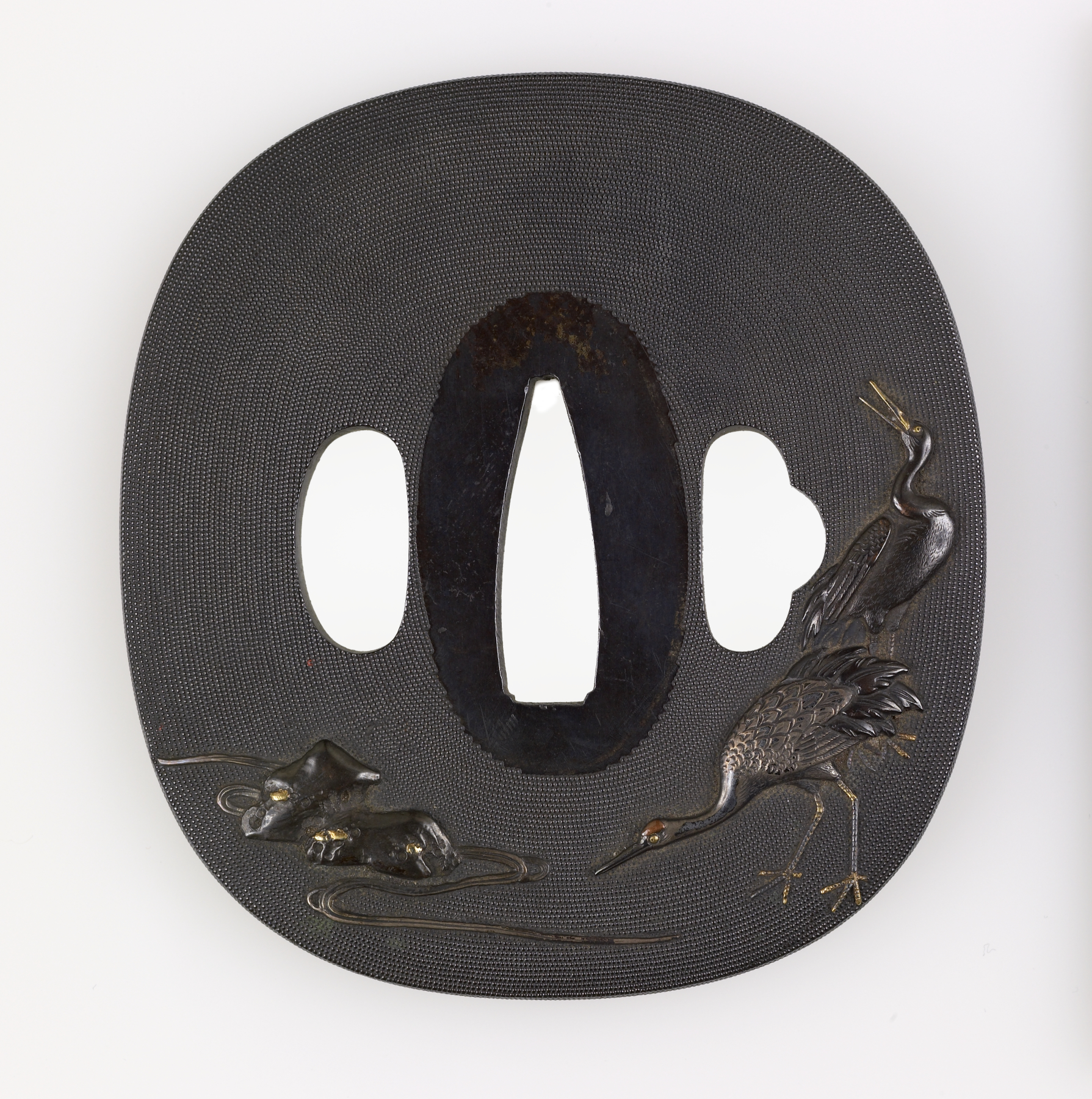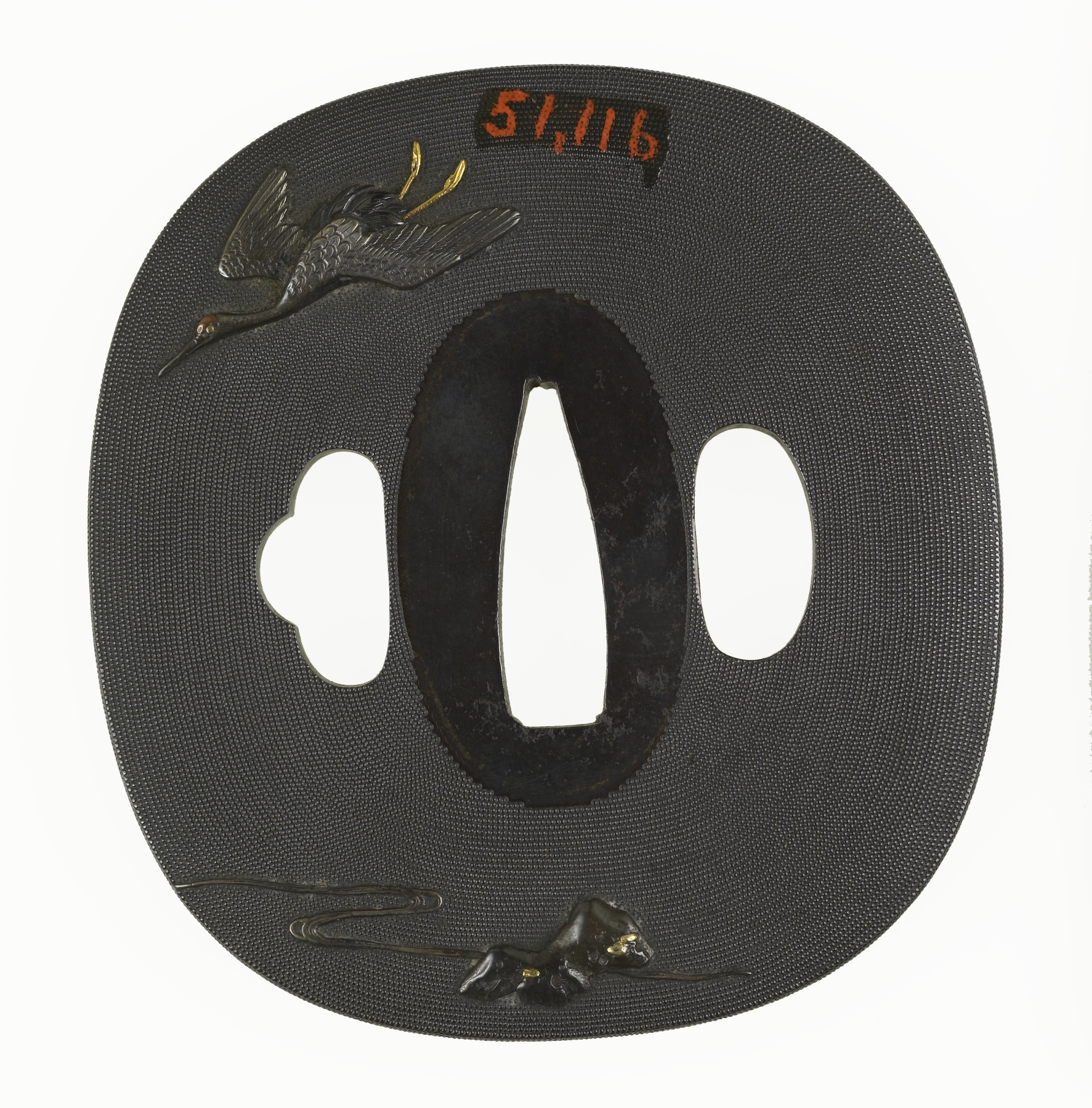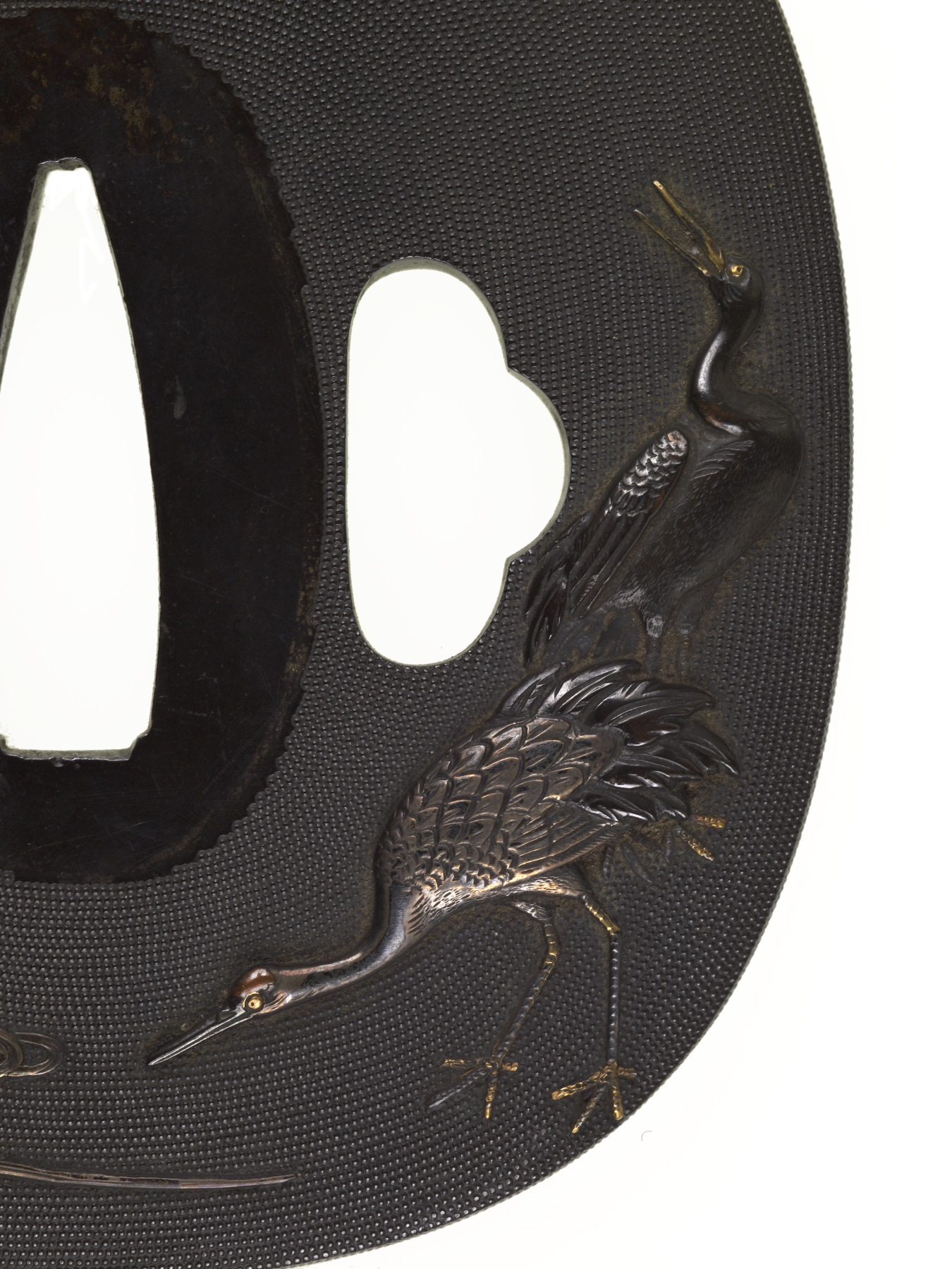Tsuba with Cranes at Water's Edge
(Japanese Military Armor)
The front of this tsuba shows two cranes near a rocky shore. Cranes are a symbol of longevity. They were often paired as a sign of martial fidelity. The back depicts a flying crane. The background of this tsuba has been worked in a style with small dots known as fish roe (nanako).
Inscription
Provenance
Provenance (from the French provenir, 'to come from/forth') is the chronology of the ownership, custody, or location of a historical object. Learn more about provenance at the Walters.
Henry Walters, Baltimore [date and mode of acquisition unknown]; Walters Art Museum, 1931, by bequest.
Conservation
| Date | Description | Narrative |
|---|---|---|
| 4/18/1962 | Treatment | cleaned |
Geographies
Japan (Place of Origin)
Measurements
2 13/16 x 2 3/8 x 1/8 in. (7.17 x 6.1 x 0.38 cm)
Credit Line
Acquired by Henry Walters
Location in Museum
Not on view
Accession Number
In libraries, galleries, museums, and archives, an accession number is a unique identifier assigned to each object in the collection.
In libraries, galleries, museums, and archives, an accession number is a unique identifier assigned to each object in the collection.
51.116






